The National Science Foundation’s Faculty Early Career Development Award is one of the most competitive and prestigious grants available for science and engineering faculty in the first stages of their careers. While promising early career faculty members at the University of Virginia generally win four to five CAREER Awards each year, the number of awards the University has received for 2020 has nearly doubled, bringing just under $3 million in new grant funding to research and educational initiatives in the College of Arts & Sciences and the School of Engineering.
“These prestigious awards are an acknowledgment of the great faculty talent we have across the University,” Melur “Ram” Ramasubramanian, UVA’s vice president for research, said. “While a Nobel Prize recognizes groundbreaking discoveries that have shown profound impact on mankind, the CAREER Award makes its bet on early career researchers with the potential to make profound impacts through their careers as academic researchers and educators.
“We look forward to seeing these eight early career awardees at UVA blossom into future leaders in research and education.”
Meet the University’s 2020 CAREER Award winners, some of UVA’s next generation of rising stars of science and engineering.
Liheng Cai (UVA Engineering, Department of Materials Science and Engineering and Department of Chemical Engineering)
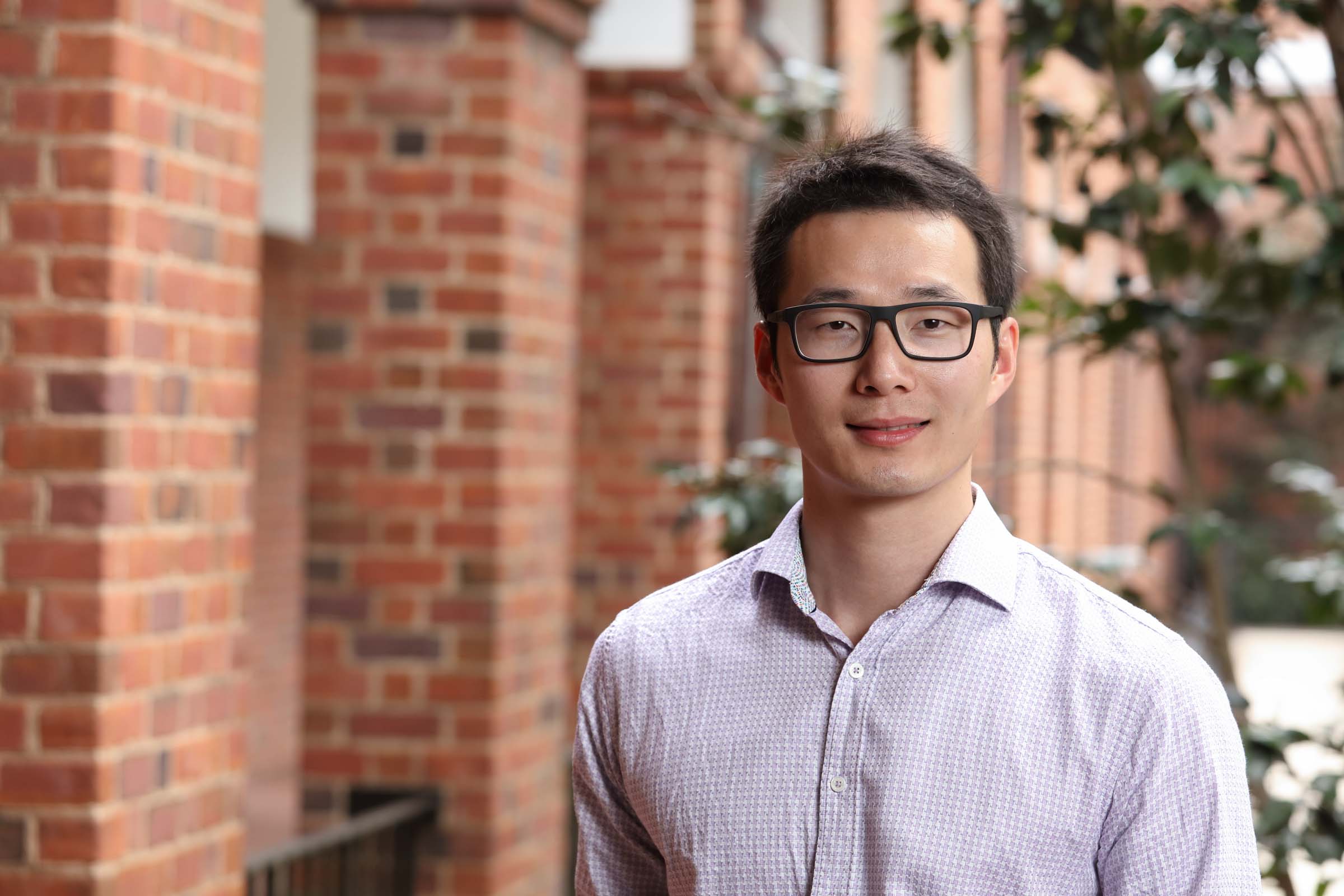
Liheng Cai and his lab team have developed a prototype polymeric photonic crystal that can be used in smart-building technologies. (Photo by Tom Cogill)
Morning sun floods into assistant professor Liheng Cai’s office in Wilsdorf Hall. The photons of infrared radiation carrying heat energy, streaming through his window after their 8-minute, 20-second journey from the sun, keep Cai warm in the winter.
But what about summer days when he’d rather stay cool? Cai’s CAREER Award involves developing adaptive photonic polymers – materials that could be applied to windows and, at the flick of a switch, reflect the invisible infrared wavelengths that toast things up while letting in all other visible light waves, enabling him to keep chill and maintain his epic view of the rest of the School of Engineering.
Cai is a rising star among a strong group of faculty members who are making UVA a leader in developing soft materials for a wide variety of uses, including smart-building technologies and health care.
He and his growing lab of post-doctoral researchers and graduate and undergraduate students have already developed a prototype polymeric photonic crystal that’s about half the size of a credit card, but can stretch to around 10 times its original size. It’s a unique material that is much softer and more stretchable than existing materials, and, if successful, will be the first for active, fast control of light. The next step would be applying the materials to smart windows to regulate energy in and out of buildings; other uses might be camouflage or adaptive optical devices.
“We are creating a type of material that can change the reflective wavelength dynamically and also very quickly,” Cai said. “I’m so excited for this invention. We have a demo and beautiful experimental results so far.”
Cristian Danna (Arts & Sciences, Department of Biology)
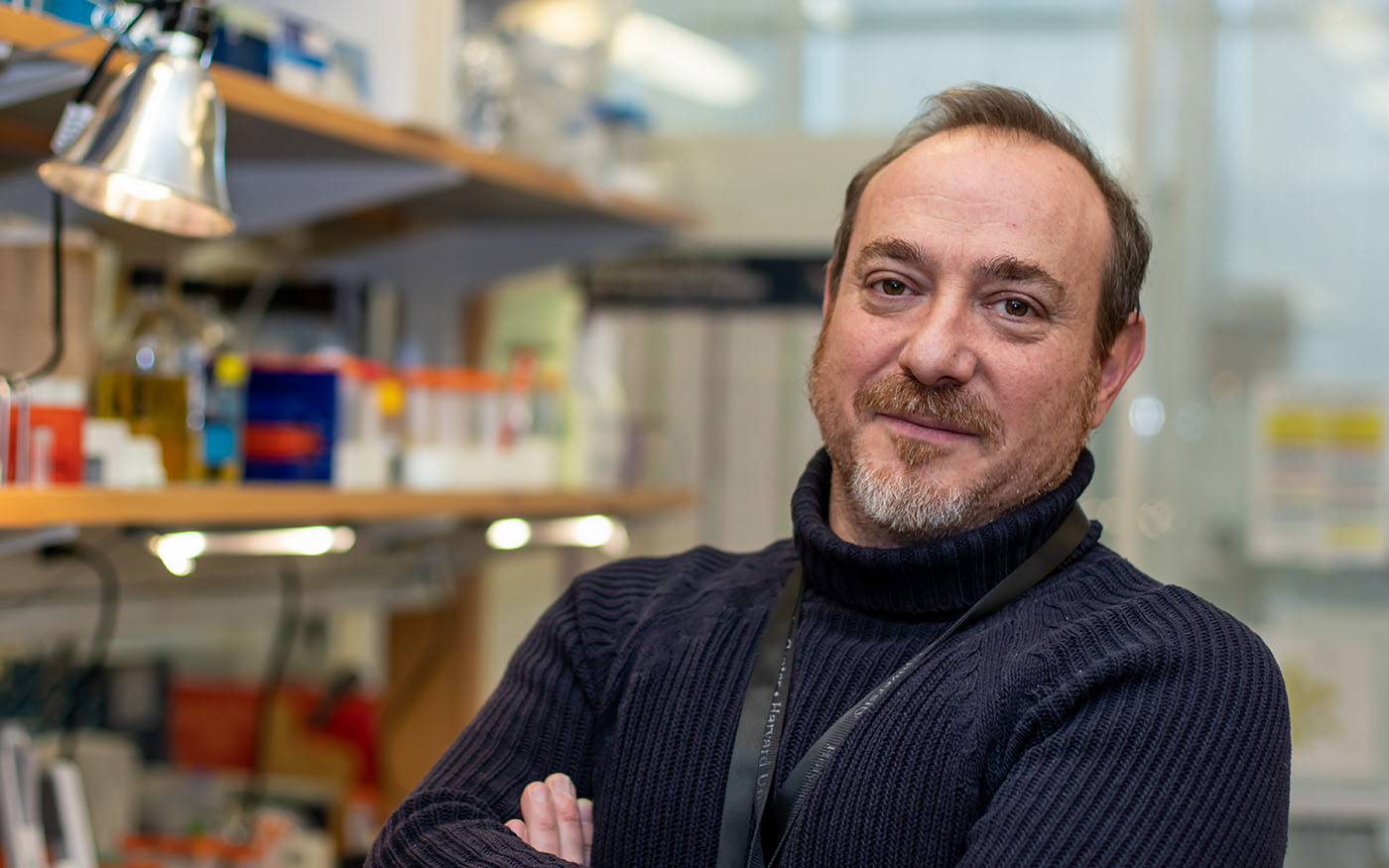
Christian “Colo” Danna studies how plants protect themselves when harmful microbes enter their environment. (Contributed photo)
For humans and animals, the immune system plays a starring role in detecting and attacking microorganisms when we’re ill. But plants don’t produce the kind of antibodies that help us fight off infection. So what helps them survive when harmful microbes enter their environment? For assistant professor of biology Christian “Colo” Danna, the answers have won him an NSF CAREER award.
Human and animal immune systems consists of two layers of defense against harmful pathogens. The first is the innate immune system, which detects microbial intruders; as it begins fighting off the invaders, it commands the body’s second line of defense, the adaptive immune system, that produces lymphocytes and antibodies to clear the infection.
“Plants don’t have an adaptive immune system,” Danna said, “but they are very effective at perceiving even very low amounts of microbes and responding to them.”
Instead of manufacturing lymphocytes and antibodies, plants respond by withholding the vital nutrients that harmful microbes need to multiply, Danna explained. “In order for [the pathogens] to survive, they have to stop growing because they have to preserve all the energy they have to deal with the scarcity of nutrients.”
But, he added, “Nobody knows how that perception mechanism turns into an immune response.”
Danna believes he knows what that mechanism is, and the CAREER Award will go a long way toward helping him be certain. Ultimately, the research could be of tremendous value in helping understand how to protect commercial crops from disease.
Lu Feng (UVA Engineering, Department of Computer Science and Department of Engineering Systems and Environment)
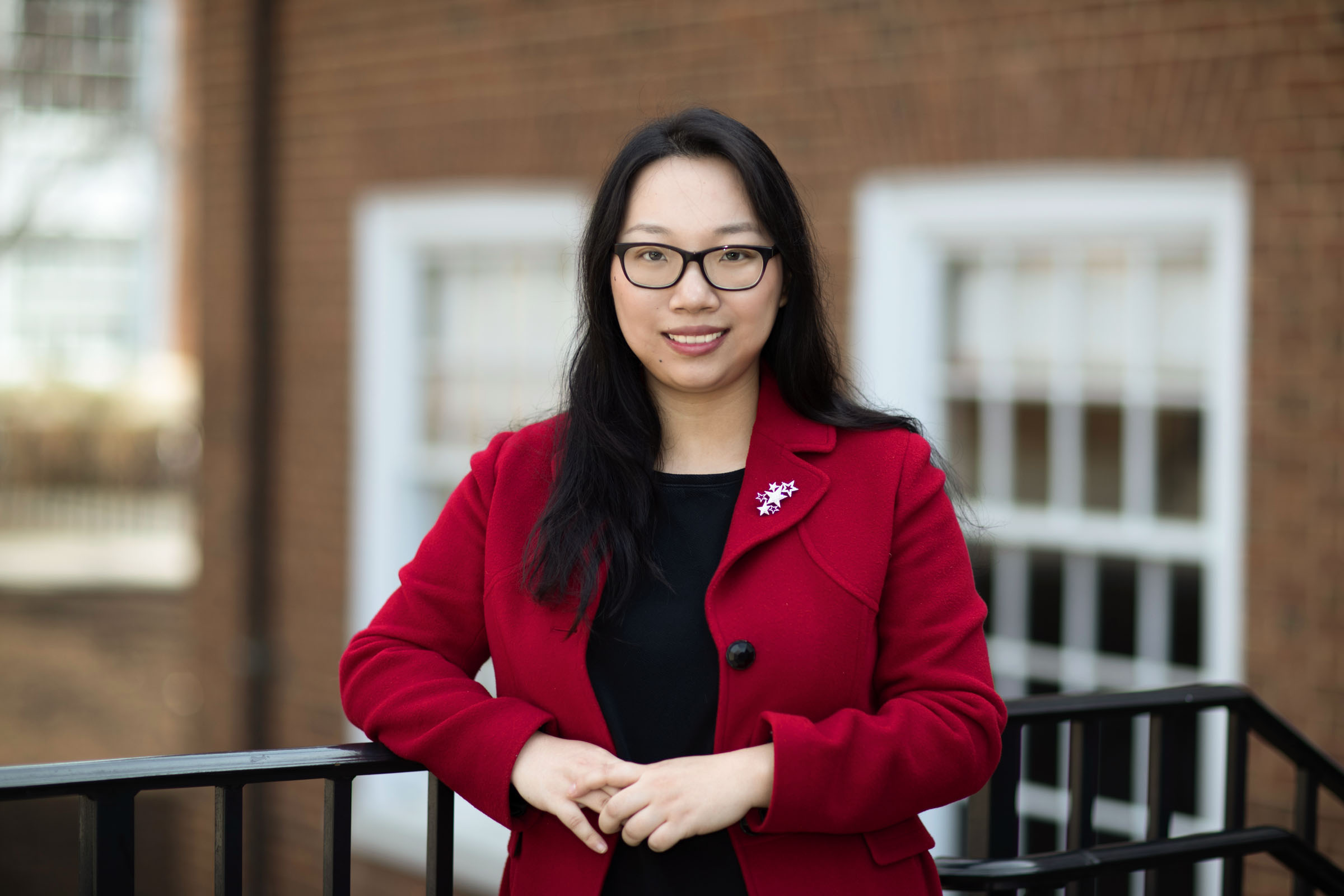
Lu Feng will use her award to design safe, model-based evaluations of human and cyber-physical system interactions. (Photo by Dan Addison, University Communications)
According to the International Federation of Robotics, 2.4 million industrial robots are operating in factories worldwide in 2020. Human interactions with cyber-physical systems, such as robots, drones and self-driving vehicles, will only continue to increase.
Although science fiction often paints a future when robots replace humans, a far likelier scenario involves humans and robots working side-by-side. The use of such human-cyber-physical systems is accelerating in all economic sectors, including health care, manufacturing and energy. The hurdle to that future is humans’ lack of trust; before humans will adopt cyber-physical systems broadly, we must be assured they are safe and reliable.
Lu Feng, a UVA Engineering assistant professor with joint appointments in the Department of Computer Science and Department of Engineering Systems and Environment, earned her CAREER Award to design rigorous, model-based evaluations of human and cyber-physical system interactions, with the goal of improving systems’ safety and reliability.
Feng, who has a driving simulator set up in her lab at UVA Engineering, chose an autonomous vehicle case study for her research because of the huge obstacles to adoption based on peoples’ perceptions of safety. Public trust of autonomous vehicles dropped following several high-profile autonomous vehicle fatalities in 2018.
“Establishing safety is the most pressing bottleneck in convincing people to buy self-driving cars and support regulations that allow these vehicles on our highways,” Feng said.
Ken Hsu (Arts & Sciences, Department of Chemistry)
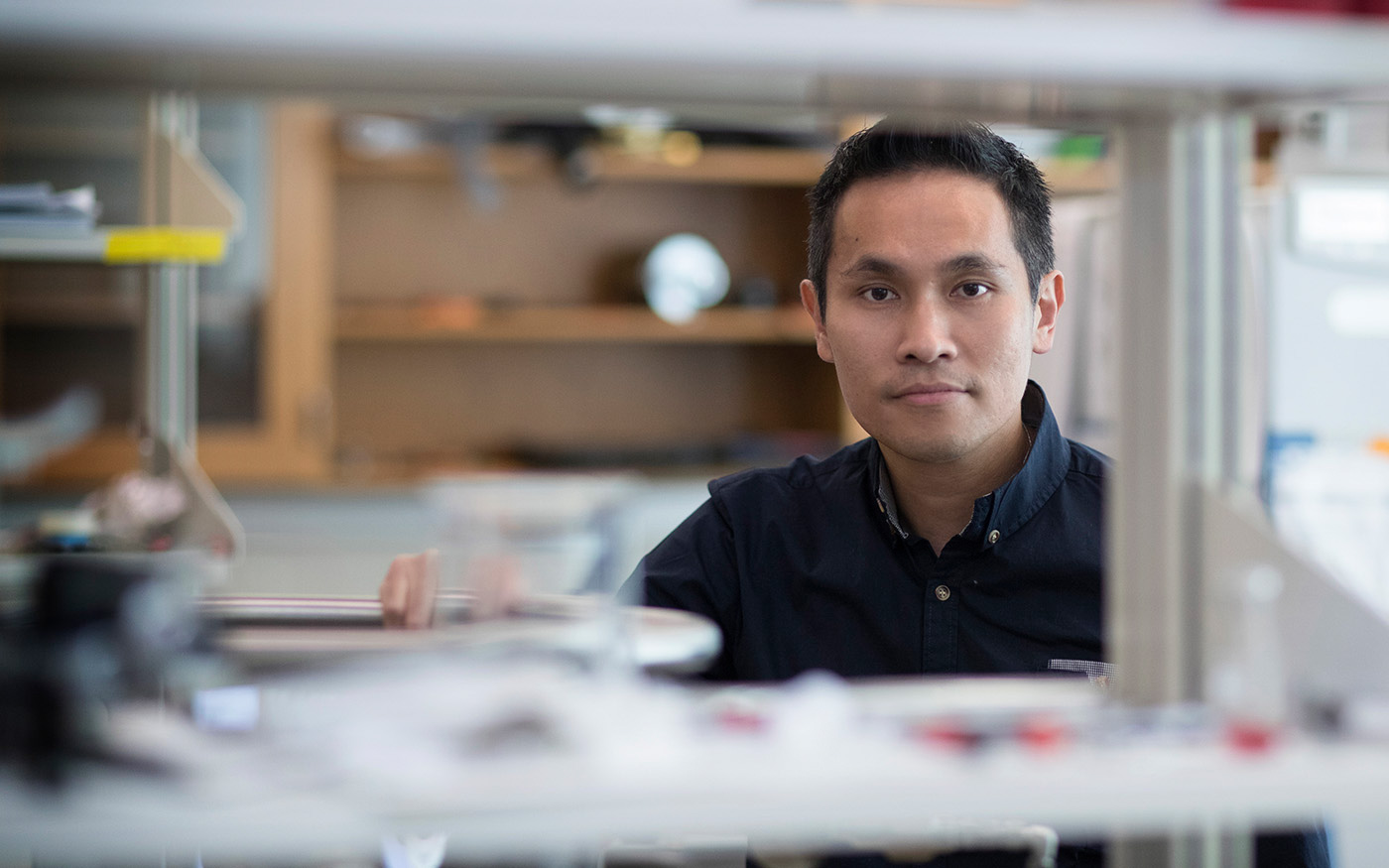
Ken Hsu is working to understand and control the body’s inflammation response, looking to maximize its healing power and minimize its more harmful effects. (Photo by Sanjay Suchak, University Communications)
If you’re injured, a little inflammation is good for you. It may hurt, but it’s a healthy response – one that means your immune system is attacking pathogens and stimulating healing. But if your body doesn’t know when to turn off the pain, you could be in for a host of other problems, including arthritis, heart disease, cancer or a debilitating addiction to painkillers.
That’s the problem at the heart of assistant professor of chemistry Ku-Lung (Ken) Hsu’s search for a chemical pathway for controlling the immune system that would maximize its healing power and minimize its more harmful effects.
But the problem isn’t as simple as turning the immune system on or off, Hsu explains; it’s a matter of finding a solution that would allow doctors to turn up the immune system to do its work without the pain and without opening the door to auto-immune diseases, in which the body begins to attack its own healthy cells.
“It’s extraordinarily complex,” Hsu said. “We really want to understand metabolism at the single-cell level. Our immune system is composed of key tissues as well as a massive assortment of cells, and oftentimes we treat these cells as if they were all equivalent because the technologies for measuring their activity were not yet available. Each cell is unique, and what the CAREER Award is going to allow us to do is figure out how different or similar they can be based on their ability to metabolize fats.”
Kyusang Lee (UVA Engineering, Charles L. Brown Department of Electrical and Computer Engineering and Department of Materials Science and Engineering)
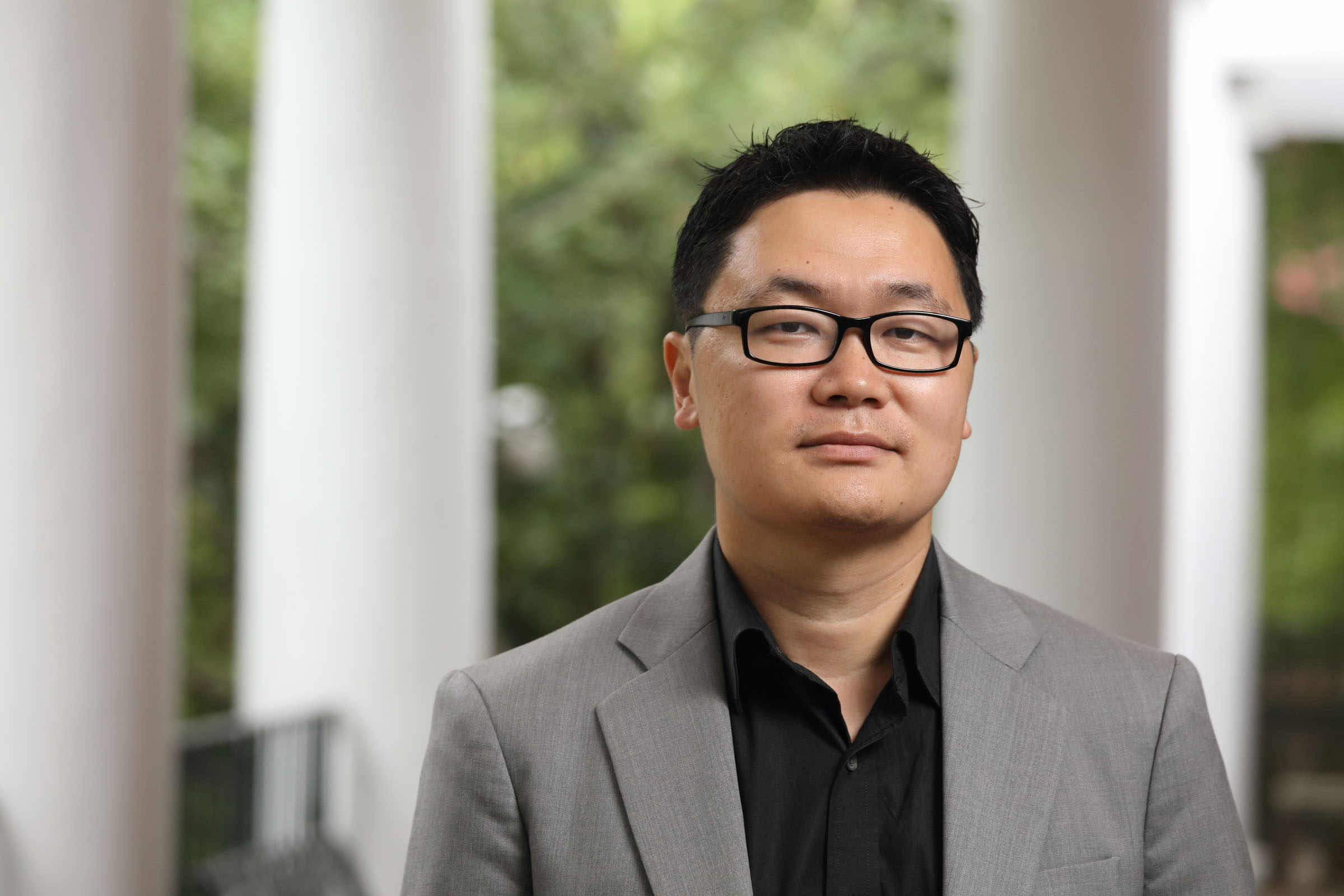
Kyusang Lee is building the equivalent of a human eye to be used as optical sensors for autonomous vehicles, robotics, manufacturing processes or surveillance systems. (Photo by Tom Cogill)
How humans see, process visual information and then react to it in a fraction of a millisecond is a biological masterpiece. But can eyesight be replicated for use in machines?
With help from his CAREER Award, assistant professor Kyusang Lee is researching and building the equivalent of a human eye and its visual cortex to be used as optical sensors for autonomous vehicles, robotics, manufacturing processes or surveillance systems.
The hemispherical image sensor Lee is developing mimics the shape of the human eye. He is growing indium gallium arsenide crystals, known for their image-sensing capabilities, on top of graphene, which is slick and will allow the image sensor to be peeled off in a thin sheet. Because of its pliable form, the sensor can then be assembled as a concave structure like the retina of the human eye. The curved sensor gives a wide, nearly 180-degree field of view. It will also be capable of working in very low light and different color spectrums, making it perfect for night vision operations and other situations when light is minimal.
He is coupling the sensor with state-of-the-art hardware that will process the input in much the same way human neural synapses process and store visual information in our brains. This serves to both increase the speed at which information can be analyzed and improve energy consumption by many orders of magnitude.
“Current sensor technology consumes a lot of energy and takes in a lot of useless information from the background of a scene,” Lee said. “We would like to reduce and pre-process the data at the image sensor itself, filtering the useful information to minimize the burden on the central processing unit. This device promises to be 1,000 times more efficient in computing than current technology.”
Dan Meliza (Arts & Sciences, Department of Psychology)
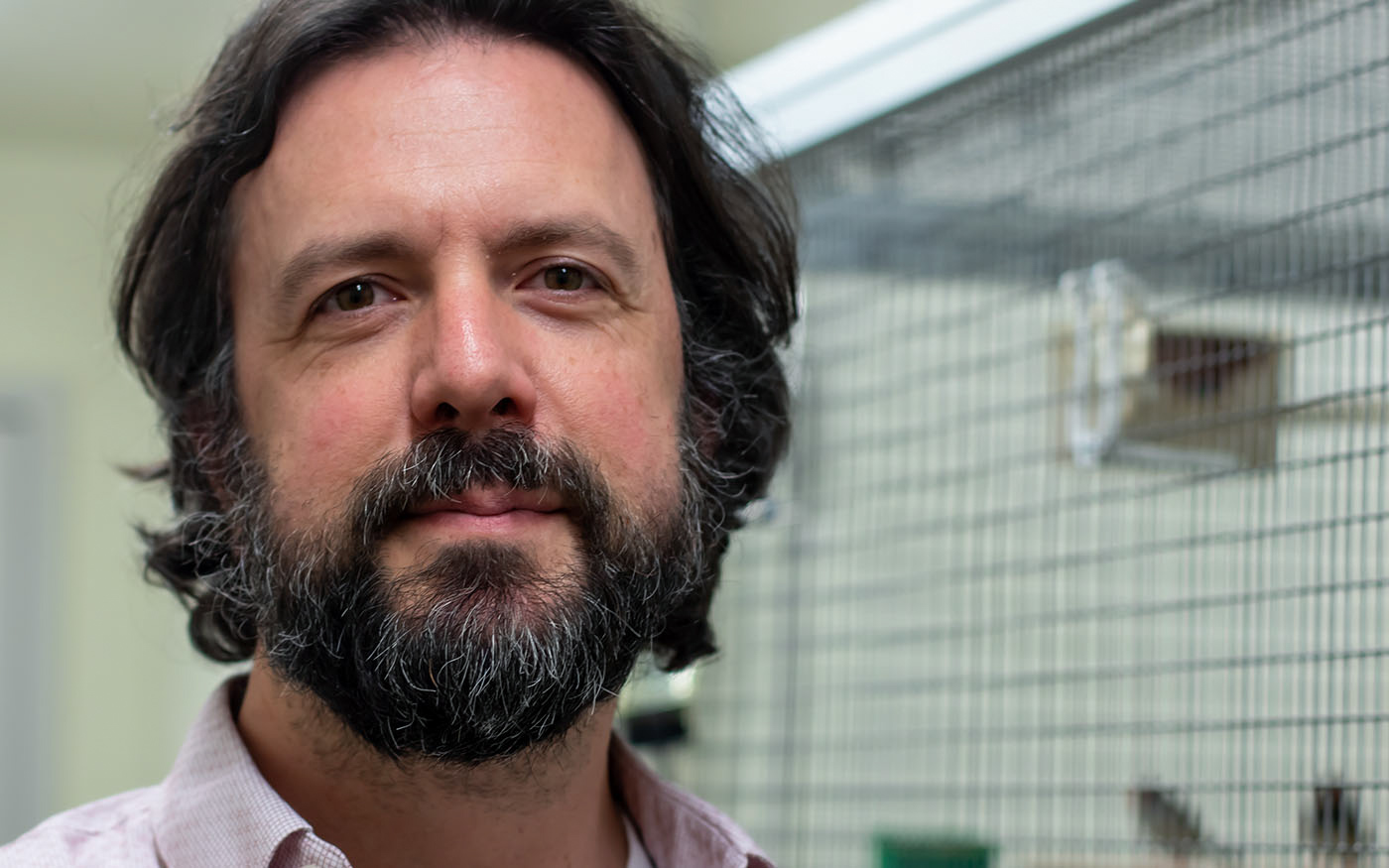
Dan Meliza studies how birds’ brains solve the problem of communicating in acoustically challenging environments in order to understand communication disorders in humans. (Contributed photo)
Songbirds like starlings and finches use song to communicate important information to their communities, often in less-than-ideal acoustic environments, and the search to understand the neural mechanisms that make that possible is what led to Dan Meliza’s CAREER Award.
Meliza explained that learning how the bird’s brain solves the problem of communicating in acoustically challenging environments may help us understand an important component of how humans learn to understand speech.
“Our brains have created models of what speech is supposed to sound like and how verbal information is structured,” Meliza said. “And when you lose information from the outside world, or when it’s just confusing and difficult to interpret, those models fill in the missing pieces. We’d like to learn where those models are instantiated in the brain and how they work.”
Finding the answers may ultimately play an important role in helping us understand communication disorders in humans. As we get older and our hearing starts to diminish, Meliza explained, our brains get worse at filling in the gaps.
“Hearing assistive devices have gotten better,” he said. “But it’s not as simple as turning up the gain.”
The answers could also lead to improvements in speech prosthetic devices, and they could help improve speech recognition in machines.
Yuan Tian (UVA Engineering, Department of Computer Science)
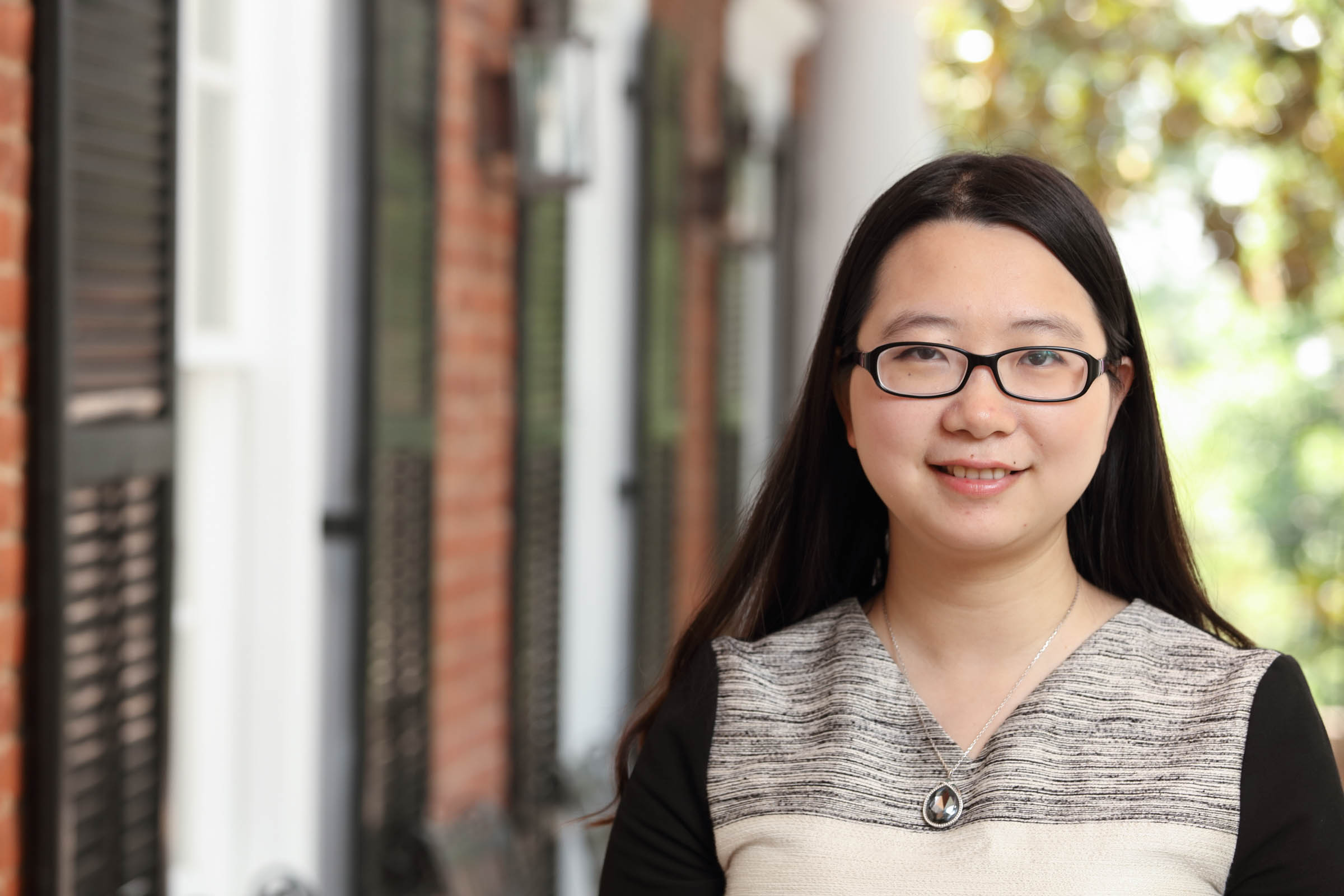
Yuan Tian is developing advanced methods to secure voice user interfaces and “internet of things” platforms. (Photo by Tom Cogill)
Voice-assisted technologies entered the mainstream marketplace in 2011 with the introduction of Google Voice. Now, according to the Pew Research Center, a quarter of all U.S. households are using voice-activated assistants like Amazon Echo or Google Home. Half of the devices’ owners expressed concern in a 2019 Pew Center survey about the amount of personal data these devices collect.
Their fears are not unfounded.
One widely reported example of how things can go wrong happened in 2017, when a TV news story inadvertently “woke up” homeowners’ Amazon Echo devices, prompting Alexa to try to order dollhouses without owners’ permission.
Voice assistants are convenient, but what if they use the wrong person’s voice? Things are further complicated by add-on functions from third-party developers for everything from ordering food to managing bank accounts. Lack of ironclad security can allow hackers, through third-party applications, to take over voice-assisted devices and get private information.
With her CAREER Award, assistant professor Yuan Tian is developing advanced methods to secure voice user interfaces and “internet of things” platforms. She will use machine learning voice testing to analyze interactions between voice-activated devices and third-party applications. The testing will gather data about vulnerabilities introduced during device setup, particularly with installation of third-party applications, and the device’s ability to distinguish between an authorized, versus unauthorized, voice.
The research is aimed at getting a better understanding of security threats and contributing to advances in the design of a wide variety of internet of things platforms.
“I envision a future where we will trust our smart devices to protect us from intrusion,” Tian said. “Teaching voice user interfaces how to always detect and block bad actors will be a key in offering users complete confidence that their data is secure.”
Marija Vucelja (Arts & Sciences, Department of Physics)
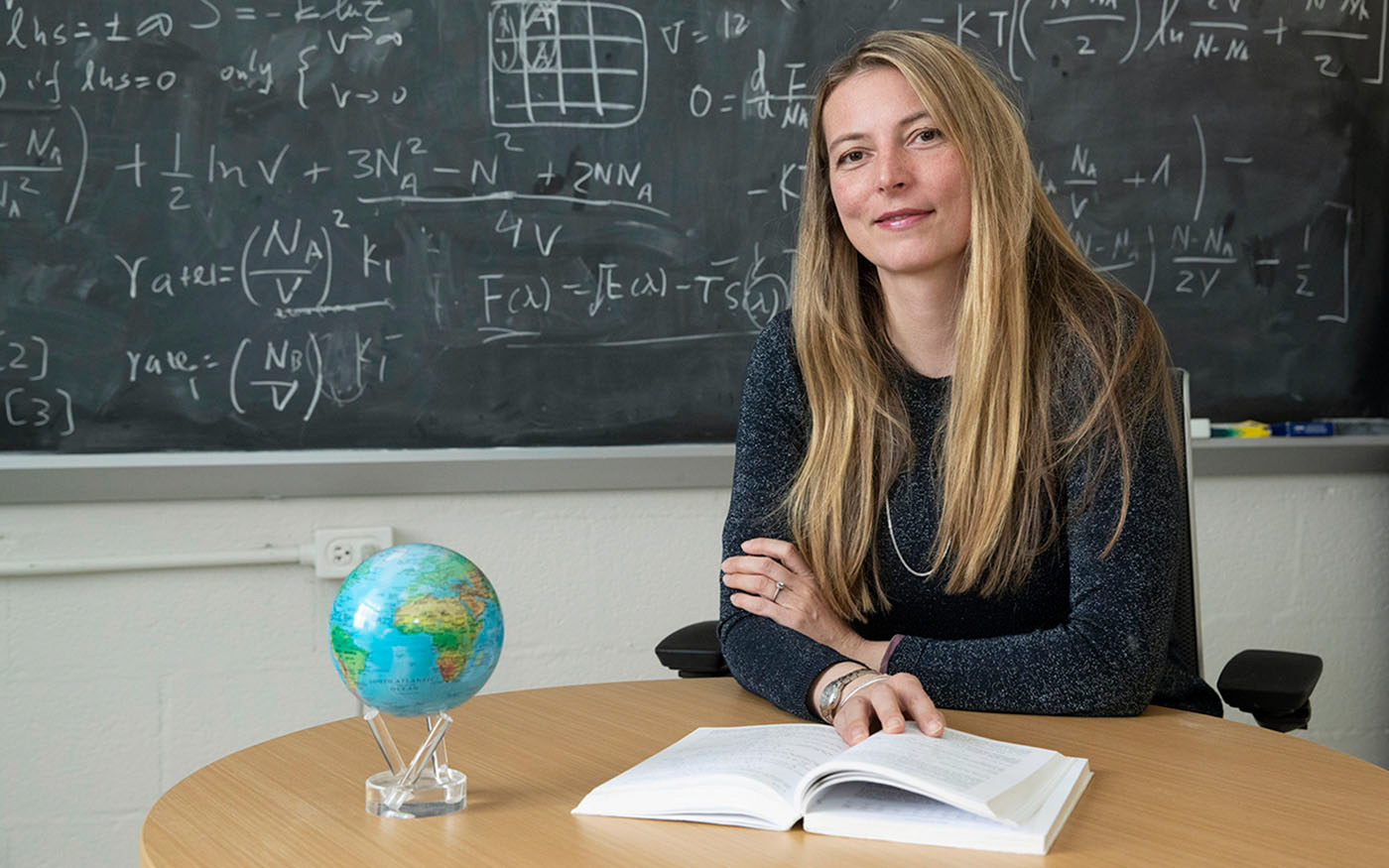
Marija Vucelja investigates how complex physical systems heat up and cool down or how their temperatures “relax” to match their environment. (Photo by Dan Addison, University Communications)
In 1963, the scientist Erasto Bartholomeo Mpemba observed that, under certain circumstances, hot water will freeze faster than cold. Today, scientists have observed that the phenomenon known as the Mpemba effect occurs not just in water, but in polymers, magnetic alloys and other physical systems. The phenomenon and the circumstances required to produce it are not fully understood, but assistant professor of physics Marija Vucelja’s efforts to do just that have won her a CAREER Award.
Vucelja is a theoretical physicist with expertise in statistical physics. She is interested in how complex physical systems heat up and cool down or how their temperatures “relax” to match their environment.
The Mpemba effect is counterintuitive, Vucelja explained. “The surprise is that some rapid cooling protocols selectively open up relaxation shortcuts for the hot system. The result is that the hot system overtakes the warm system and equilibrates with the cold environment faster. My research is about finding out and quantifying when such remarkable shortcuts in thermal relaxation occur.”
In her search for answers, Vucelja is focusing on simple models of physical systems, and applying statistician’s tools of averages and probabilities to strip the complexity of the process down to its essential properties. The CAREER Award will allow her to develop a general theoretical framework for understanding and predicting how these relaxation shortcuts occur, which could lead to important advances in efficiency for manufacturing and metallurgy.
Media Contact
Article Information
April 10, 2020
/content/uva-science-and-engineering-faculty-win-eight-nsf-career-awards

